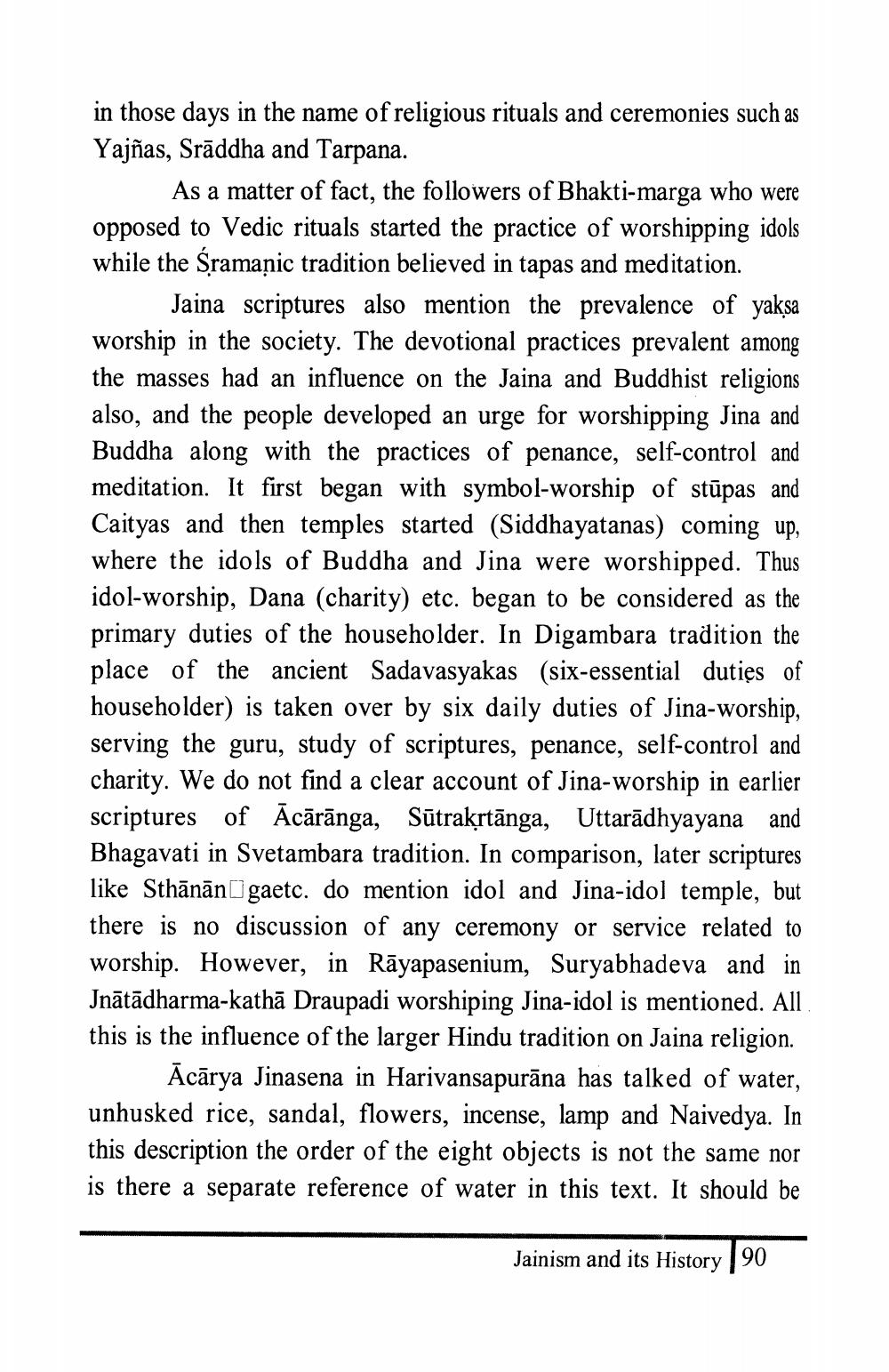________________
in those days in the name of religious rituals and ceremonies such as Yajñas, Srāddha and Tarpana.
As a matter of fact, the followers of Bhakti-marga who were opposed to Vedic rituals started the practice of worshipping idols while the Sramanic tradition believed in tapas and meditation.
Jaina scriptures also mention the prevalence of yaksa worship in the society. The devotional practices prevalent among the masses had an influence on the Jaina and Buddhist religions also, and the people developed an urge for worshipping Jina and Buddha along with the practices of penance, self-control and meditation. It first began with symbol-worship of stūpas and Caityas and then temples started (Siddhayatanas) coming up, where the idols of Buddha and Jina were worshipped. Thus idol-worship, Dana (charity) etc. began to be considered as the primary duties of the householder. In Digambara tradition the place of the ancient Sadavasyakas (six-essential duties of householder) is taken over by six daily duties of Jina-worship, serving the guru, study of scriptures, penance, self-control and charity. We do not find a clear account of Jina-worship in earlier scriptures of Ācārānga, Sūtrakrtānga, Uttarādhyayana and Bhagavati in Svetambara tradition. In comparison, later scriptures like Sthānān i gaetc. do mention idol and Jina-idol temple, but there is no discussion of any ceremony or service related to worship. However, in Rāyapasenium, Suryabhadeva and in Jnātādharma-kathā Draupadi worshiping Jina-idol is mentioned. All this is the influence of the larger Hindu tradition on Jaina religion.
Ācārya Jinasena in Harivansapurāna has talked of water, unhusked rice, sandal, flowers, incense, lamp and Naivedya. In this description the order of the eight objects is not the same nor is there a separate reference of water in this text. It should be
Jainism and its History | 90




